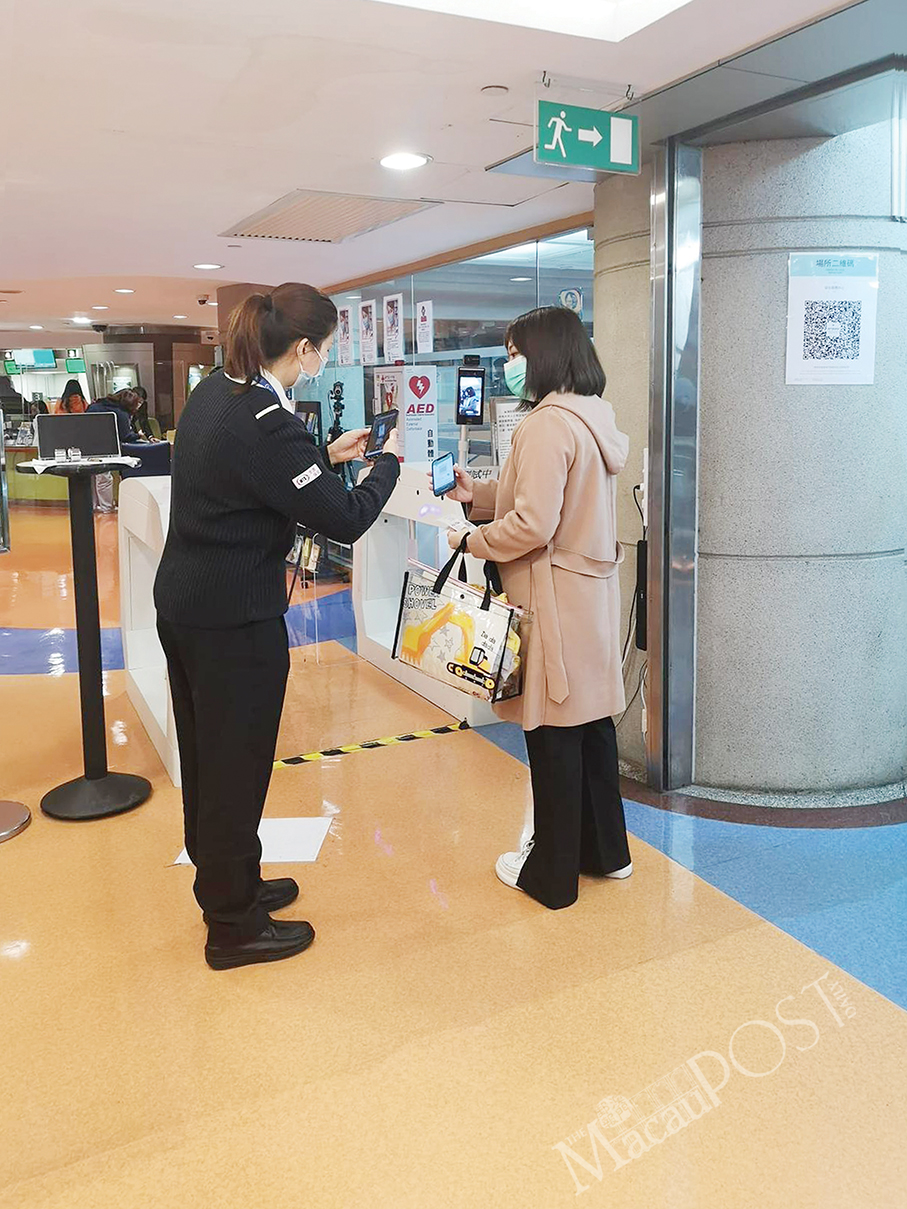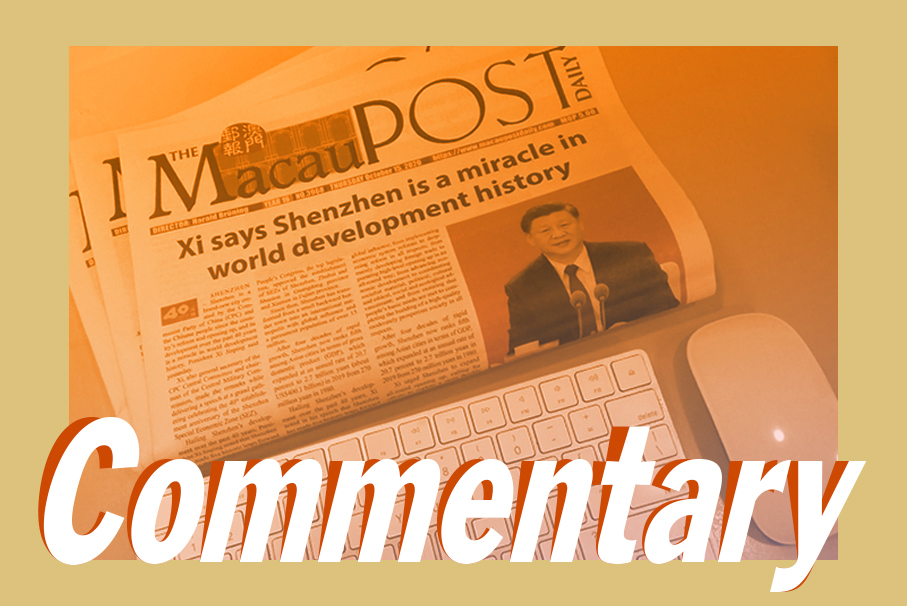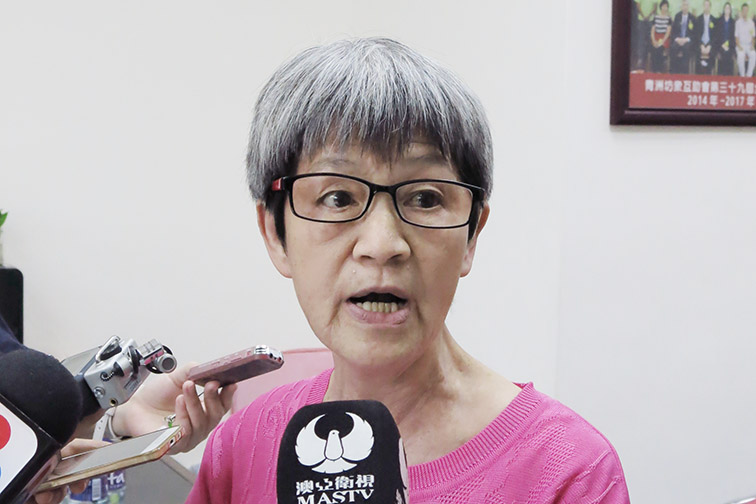Addressing yesterday’s regular press conference about Macau’s novel coronavirus situation, Leong Iek Hou, who heads the Communicable Disease Prevention and Control Division of the Health Bureau (SSM), said that the latest statistics on the use of the Macau Health Code mobile app indicate that residents are getting used to scanning contact-tracing-function QR codes – aka venues codes – with their smartphones when entering different venues and facilities.
Leong said that around 579,000 smartphone users have downloaded the Macau Health Code mobile app, which was rolled out in November, adding that the number of residents using the app has been constantly increasing.
The contact tracing function of the Macau Health Code mobile app enables residents to record their visits accurately, which will help health officials in their epidemiological investigations in case the city is hit by new local COVID-19 cases. Contact-tracing-function QR codes for app users to scan so as to record their visits have been set up in various venues and facilities in the city, and the government is continuing with its campaign to extend the use of the function to more premises and facilities.
The website version of the Macau Health Code remains operational, which means that smartphone users can choose to continue using the website version or switch to the mobile app version, when generating their health code. However, the contact tracing function is only available on the mobile app version, as mobile web browsers are unable to scan a QR code.
On Tuesday, Leong said, 1.74 million person-times generated their Macau Health Code in the city, of whom 1.36 million generated their health code on the mobile app version, while the remaining 380,000 continued using the website version to generate their health code. Of the 1.36 million person-times, Leong said, 770,000 scanned QR codes when visiting premises and venues before generating a health code, while the other 590,000 merely generated a health code on the app without scanning a venue code, i.e., without recording their visits.
Leong said that the latest statistics indicate that residents have been gradually getting used to scanning venue codes to record their visits.
1st and 2nd phases
Leong also said that the first phase of the government’s work to set up contact-tracing-function QR codes in local venues and facilities has now been completed, according to which venue codes are now available at all public entities’ offices and their public service facilities, medical institutions and facilities, social service facilities, public transport vehicles (buses and taxis), restaurants and other kinds of eateries, all kinds of entertainment venues, shopping centres, supermarkets, financial institutions (such as banks and insurance companies), wet markets, and parks.
Leong said that there are still some venues and facilities with COVID-19 spread risk that have not been included in the first phase of the government’s work of setting up contact-tracing-function QR codes, because of which, Leong said, the government is planning to launch the second phase of setting up venue codes, which means that the use of the function will be extended to more types of premises and facilities in the city.
Those without a smartphone can present a printed version of their Macau Health Code, which will be scanned by staff members of the respective premises and facilities with a smartphone or other digital devices so as to record that they have visited there. A printed version of Macau Health Code is only valid on the day it is generated on a computer.
Leong said that while 770,000 person-times scanned venue codes with their Macau Health Code mobile app on their smartphones on Tuesday, 20,000 person-times presented their health code – either a printed version or being displayed on the health code’s website version on a smartphone – for staff members of the respective premises and facilities to scan to record that they had visited there.
Leong again urged those who have still not downloaded the Macau Health Code mobile app to download and use it. She also asked residents to help senior citizens download the app and teach them how to use it.
Leong also noted that while currently all those entering public entities’ offices and their public service facilities must scan the contact-tracing-function QR codes or have their Macau Health Code scanned by staff members, it is still not mandatory for those entering all other kinds of public facilities, such as wet markets and parks, to record their visits – either by scanning the venue codes or having their health code scanned by staff, meaning that they are merely “encouraged” by staff to record their visits, Leong said.
‘Closed-loop management’ for airport staff
Meanwhile, Leong also noted during yesterday’s press conference that those working at the local airport who are in contact with passengers arriving from medium- or high-risk COVID-19 areas have been subject to “closed-loop management” measures, similar to quarantine-hotel staff members working in COVID-19 high-risk positions and those working at other border checkpoints who are in contact with travellers from medium- or high-risk areas.
Leong said that the “closed-loop management” measures for airport staff is carried out as a “14+7+7” model, according to which they only travel between their workplace and an arranged accommodation location during their 14-day work period, during which they are barred from entering the community. After the 14-day period, Leong said, they are required to undergo seven days of medical observation at a quarantine hotel. After completing their seven-day hotel quarantine, the airport staff members are required to practise seven days of “self-health management”, during which they can return to the community but are required to undergo a number of COVID-19 nucleic acid tests (NATs).
According to Leong, the airport staff members subject to the “closed-loop management” measures include security guards, cleaners, and those handling and transporting passengers’ luggage.

A security guard scans a Macau Health Code presented by a woman on her smartphone at the Municipal Affairs Bureau’s (IAM) service centre in China Plaza in Nam Van earlier this month. Photo: IAM






